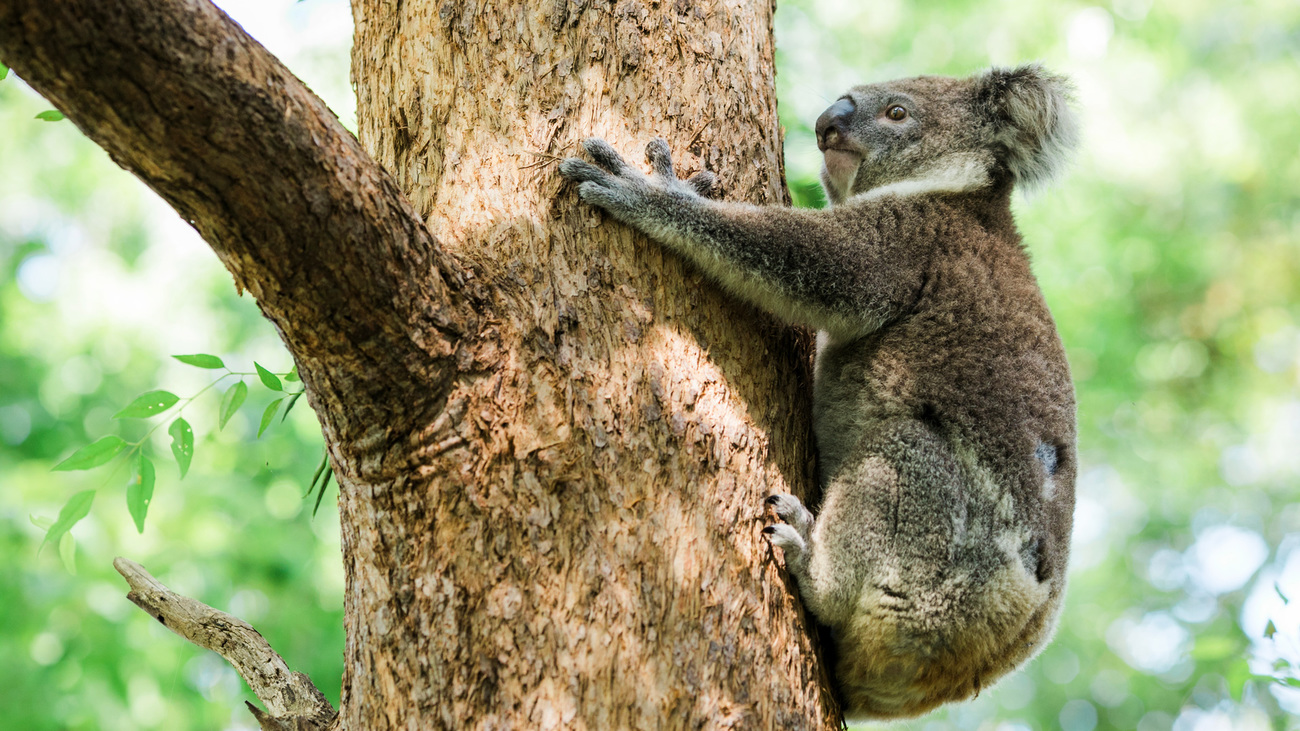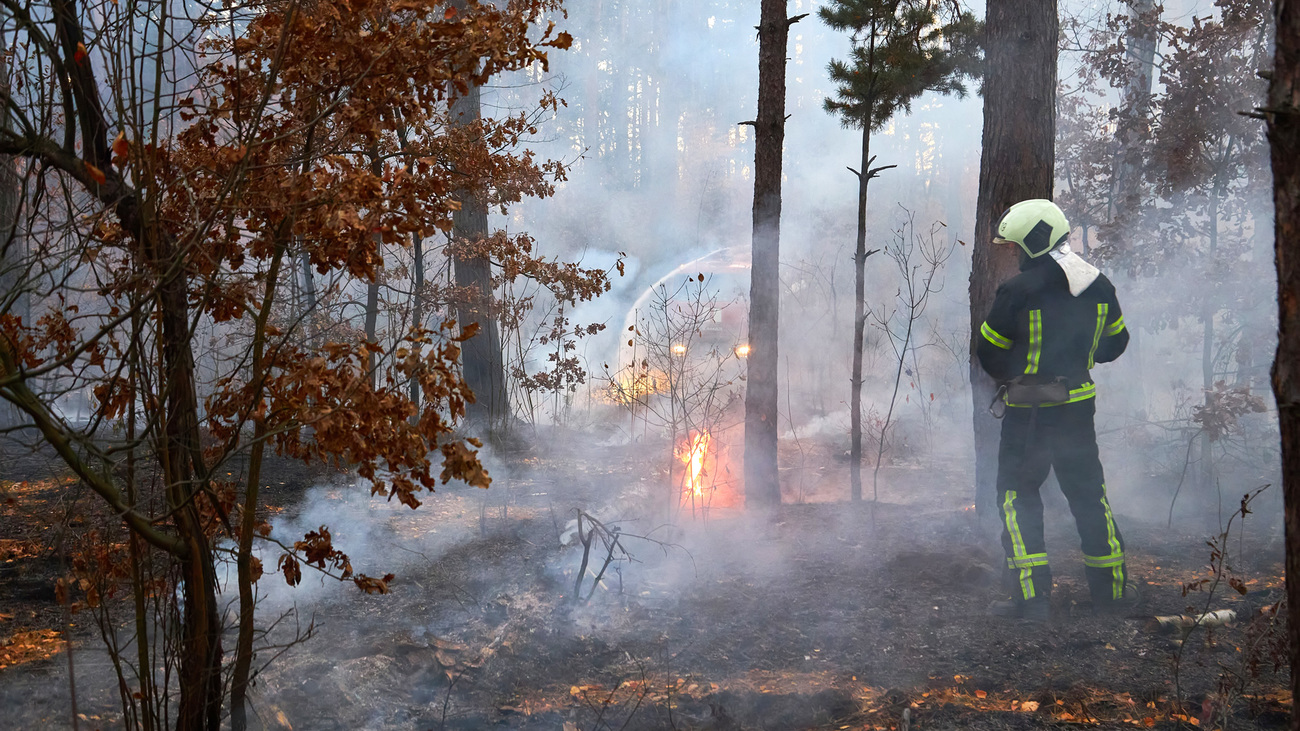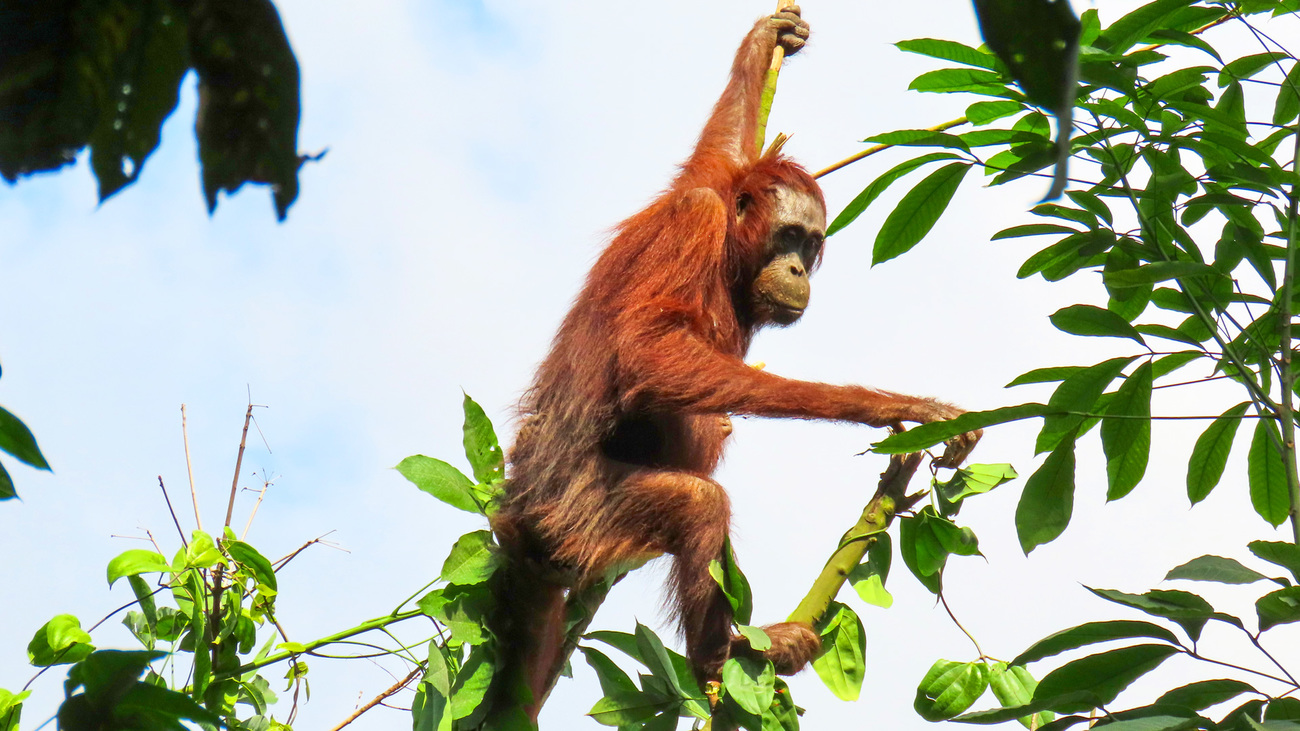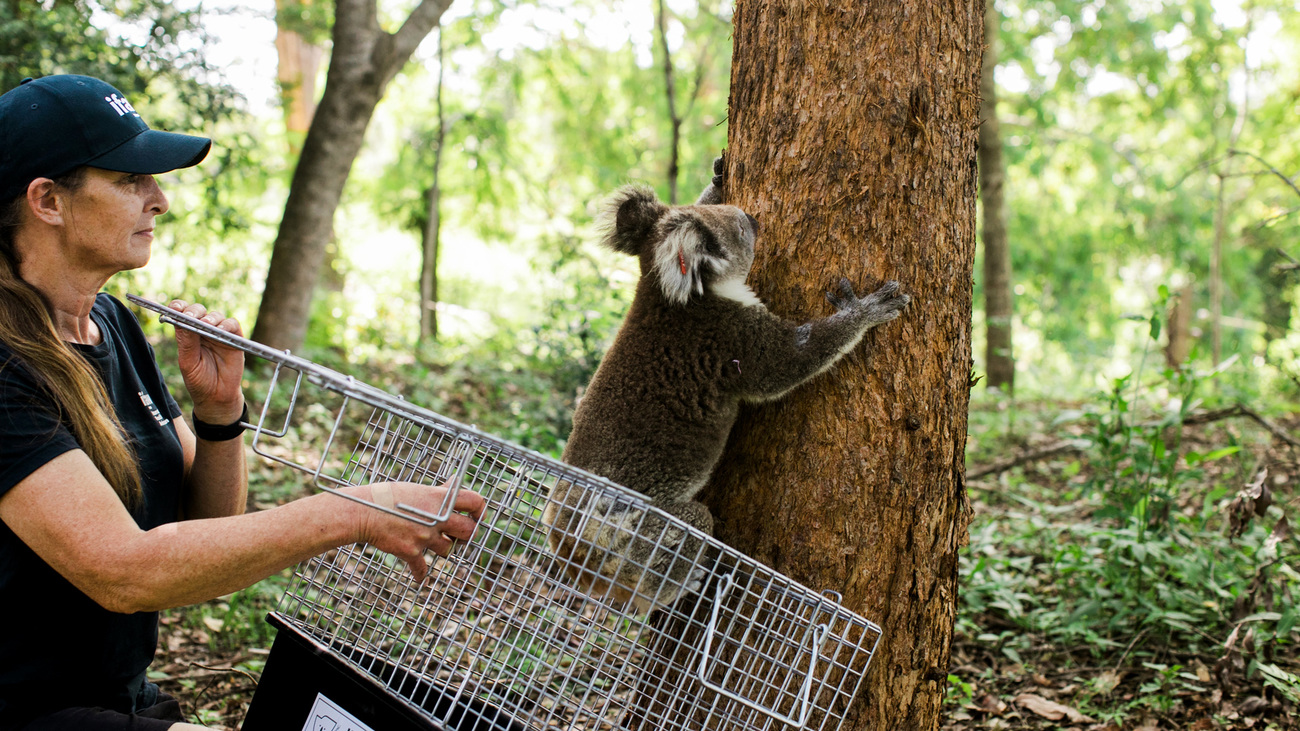What is deforestation and how does it impact wildlife?
What is deforestation and how does it impact wildlife?
Deforestation is one of the most critical issues threatening biodiversity and the health of our planet. The loss of forests jeopardizes the survival of countless plant and animal species worldwide. In this blog post, we explore everything you need to know about the causes and effects of deforestation and what urgent conservation action is needed to protect our planet’s rich biodiversity.

IFAW is an international organization that works to protect wildlife and their habitats around the world. As deforestation is one of the biggest threats to wildlife, some of our projects involve tree-planting and protecting forests where endangered and threatened species live. Read on to learn more about deforestation’s impact on wild animals and how IFAW is working to mitigate it.
What is deforestation?
Deforestation is the process of clearing or thinning forests by humans to make the land available for other uses. This can involve cutting down trees, clearing land for agriculture, or building roads and neighborhoods. It is a significant environmental issue, impacting the balance of ecosystems, climate, and biodiversity.
We have a responsibility to understand its causes and consequences and to develop effective strategies to protect our remaining forests.
What causes deforestation?
Deforestation is driven by a variety of human activities and natural events, each contributing to the rapid loss of forest cover around the world. Let’s look at some of the primary causes in more depth.
Agriculture
Expanding agricultural activities—including large-scale commercial farming and small-scale farms—is the leading cause of deforestation. Forests are often cleared to plant crops or graze livestock. For instance, vast areas of the Amazon Rainforest have been cleared for soybean farming.
Palm oil is a prime example of a crop that is causing mass deforestation and impacting wildlife. The growing demand for palm oil, used in a wide range of products from food to cosmetics, has led to the establishment of large palm oil plantations. Indonesia and Malaysia, in particular, have seen significant deforestation as a result of palm oil production.
Clearance for livestock
Raising livestock requires large tracts of land, so significant portions of natural forests are cleared to create pastures for cattle. But this livestock doesn’t just need space to graze. Animal agriculture also needs space to grow crops to feed these farmed animals.
Timber
The demand for wood and wooden products leads to extensive logging operations, causing widespread deforestation as trees are cut down at a far faster rate than they can grow. Illegal logging is also an issue, accounting for 15% to 30% of global timber production.
Fires
Fires, both natural and human-caused, contribute to deforestation. Natural wildfires can spread rapidly in dry conditions, while humans often set fires intentionally to clear land for agriculture or development. In recent years, uncontrolled fires in the Amazon have garnered global attention for their destructive impact. In late 2023, IFAW supported the rescue and rehabilitation work of local organisation Tamanduá Institute in Brazil, which saved wild animals from these fires.

Mining
Extractive activities such as mining for minerals, oil, and gas require clearing forests to access the resources beneath them. The Amazon and Congo basins in particular have both seen extensive deforestation due to mining operations.
Roads
In addition to the forest that has to be cleared to build a road, studies show that the construction of roads and highways facilitates further deforestation, as it provides easy access to previously remote forest areas. This often leads to increased logging, agricultural expansion, and settlement.
Urbanization
As urban areas expand, forests are cleared to make way for new homes, commercial buildings, and infrastructure. Rapid urbanization in countries like India and China has resulted in a significant loss of forest land to accommodate growing cities.
The effects of deforestation on climate change
Deforestation significantly contributes to climate change by disrupting the global carbon cycle and increasing greenhouse gas emissions.

Removes carbon sinks
Forests act as carbon sinks, absorbing carbon dioxide (CO2) from the atmosphere and storing it in their biomass. When trees are cut down or burned, this stored carbon is released back into the atmosphere. More CO2 in the air contributes to the atmosphere’s greenhouse effect, trapping heat and increasing global temperature.
Deforestation accounts for about 10% of all human-induced greenhouse gas emissions. Deforestation also reduces the number of trees available on earth to absorb carbon dioxide in the air, worsening the problem and accelerating climate change.
Disrupts the water cycle
The loss of forests also impacts soil carbon storage and disrupts local water cycles. Forests play a crucial role in the water cycle by regulating rain, evaporation from the soil, and groundwater recharge. Deforestation disrupts these processes, causing changes in weather patterns, reduced rainfall, and altered climate conditions.
Creates negative cycles
The effects of deforestation can create feedback loops that worsen climate change. For instance, increased temperatures from global warming can lead to more frequent and severe forest fires, which in turn cause more deforestation and release more CO2, further increasing global temperatures.
These interconnected processes underscore the critical role of forests in maintaining climate stability. To mitigate the effects of climate change, we need to drastically reduce the amount of deforestation that is currently occurring around the globe.
Deforestation is not just a local environmental issue but a global problem with far-reaching consequences for climate stability and the health of our planet.
The impacts of deforestation on wildlife
Deforestation causes significant problems for wildlife by leading to habitat loss, habitat fragmentation, and increased human-wildlife conflict.
When forests are cleared, countless species lose their homes and the resources they need to survive, leading to population declines and, in some cases, extinction. Habitat fragmentation divides continuous forests into smaller, isolated patches, which can limit species’ movement, reduce genetic diversity, and disrupt breeding patterns.
Additionally, as human activities encroach on natural habitats, the likelihood of human-wildlife conflict increases, often resulting in harm to both animals and humans.
What animals are most affected by deforestation?
Let’s look at some of the species that are currently most impacted by deforestation, on every continent across the world.
Orangutans
Palm oil production in Borneo and Sumatra, where orangutans are found, poses a major threat to orangutans’ habitats, as the demand for this cheap and versatile oil has skyrocketed.
As their forest habitats are cleared, orangutans lose their homes and sources of food, leading to sharp population declines. As they are forced into closer proximity with humans, there has been an increase in orangutans being injured or killed, and young orangutans are sometimes captured for the illegal pet trade.

Sumatran rhinos
This endangered rhino species is native to Southeast Asia, with only about 30 individuals left in the wild. Just like the orangutans, as forests are cleared for palm oil on the islands of Borneo and Sumatra, these rhinos lose the dense, tropical forests that provide them with food, shelter, and breeding grounds.
Additionally, deforestation opens up previously inaccessible areas, increasing the risk of poaching.
Chimpanzees
Deforestation is a major cause of habitat loss for chimpanzees. They live in trees and rely on them for food, shelter, and protection from predators. In West Africa, where many chimpanzees live, more than 80% of native forests had been totally cleared for agricultural expansion by the 2000s.
As forests are cleared, chimpanzees lose their natural habitats, and venture closer to human settlements in search of food, increasing the likelihood of human-wildlife conflict and the transmission of diseases.
Pygmy sloths
Pygmy sloths are found only on the tiny Isla Escudo de Veraguas off the coast of Panama. This small island’s mangrove forests provide the pygmy sloths with their primary habitat, offering food and shelter. Deforestation for development and timber extraction significantly reduces the limited forest area available to these sloths, leading to habitat loss and fragmentation.
As their habitat shrinks, pygmy sloths are driven out of their nesting sites, leaving them vulnerable to hunters and predators. Their population has collapsed from around 500 in 2001 to only 70 at the last official count in 2012.
Monarch butterflies
Beautiful monarch butterflies are known for their impressive migrations, but not many people realise that the species’ status was recently updated to endangered by the IUCN because of threats from habitat destruction and climate change.
These butterflies rely on specific forest areas, such as the oyamel fir forests in the mountains of central Mexico, to survive the winter months. Deforestation makes it more difficult for monarchs to find the sheltered, cool conditions they need to survive the winter.
Additionally, they face habitat loss in their breeding and migratory routes across North America. Pesticides and herbicides used in intensive agriculture across this range kill the butterflies and the milkweed plants its larvae feed on.
Koalas
These iconic marsupials may be a symbol of Australia, but they’re significantly threatened by deforestation of the eucalyptus trees they depend on for food and shelter.
Deforestation reduces the available habitat for koalas, fragmenting their populations and limiting their ability to find suitable food and mates. Additionally, it increases the risk of koalas encountering predators and road traffic as they search for new habitats. The loss of eucalyptus trees also reduces the availability of food, leading to malnutrition and starvation among koala populations.
Lemurs
These primates are found only on the island of Madagascar, where forests are rapidly disappearing due to agricultural expansion, logging, mining, and charcoal production. Between 2000 and 2016, it is estimated that over 3 million hectares of forest were lost, causing the extinction of 61 species of lemurs.
Lemurs face increased competition for resources and predation risk as they are forced into smaller and more fragmented areas. The loss of forests also exposes lemurs to human activities, such as hunting and capture for the pet trade.
Jaguars
Jaguars, the largest big cats in the Americas, are one of the many species under threat from extensive deforestation in the Amazon rainforest. These apex predators rely on large, contiguous forest habitats for hunting and breeding, which are rapidly disappearing.
Furthermore, habitat loss forces jaguars into closer proximity to human settlements, encouraging them to target farmers’ crops and livestock for food, and increasing the risk of retaliatory killings and poaching.
African elephants
The deforestation of their habitats for agriculture and livestock farming poses a major threat to African elephants, which rely on large swathes of land for finding food, water, mates, and adequate breeding ground. The habitats of elephants across Africa are increasingly becoming fragmented, leading to a lack of resources and space for these large animals. This pushes elephants closer and closer to humans and sparks human-wildlife conflict.
How is IFAW helping animals impacted by deforestation?

IFAW is actively involved in numerous projects that aim to relieve animals of the devastating impacts of deforestation around the world.
Our Room to Roam initiative focuses on reconnecting fragmented habitats to facilitate the movement of elephants and other wildlife in Africa. By restoring and protecting critical corridors and landscapes, IFAW’s Room to Roam initiative helps ensure that animals can access essential resources such as food, water, and breeding grounds.
Over 330,000 elephants benefit from Room to Roam, which is implemented in 10 key landscapes across East and southern Africa.
Additionally, IFAW collaborates with local communities, governments, and other stakeholders to implement sustainable land-use practices and conservation strategies. For example, in Assam, India, we have supported the Wildlife Trust of India (WTI) in helping families become less dependent on the forest.
A decade ago, it wasn’t uncommon for villagers to lose their lives when coming face-to-face with elephants in the forests. WTI trained locals to install stoves in home kitchens that allow villagers to cook food without needing to go into the forest to collect wood. Not only has the introduction of these stoves saved more than 10,000 trees from being felled for fuel but the cleaner fuel has also reduced in-house smoke significantly.
IFAW also works with partners in Australia to rescue and protect the habitats of koalas. Our projects involve community engagement, landscape conservation, and policy work to ensure koalas’ long-term welfare and conservation. We collaborate with organizations including Friends of the Koala and Mosswood Wildlife to provide veterinary treatment to hundreds of animals every year, and with the Koala Clancy Foundation and Bangalow Koalas to restore wildlife corridors where they live. We also partner with the University of the Sunshine Coast’s Detection Dogs for Conservation to seek out sick and injured koalas and perform health and habitat surveys. Our work involves planting trees to help restore their habitat and providing access to more food sources, as well as rescuing koalas impacted by bushfires.
IFAW is working across the globe to safeguard vulnerable species and their habitats from the adverse impacts of deforestation. And we can’t do it without your help.
Related content
Our work can’t get done without you. Please give what you can to help animals thrive.